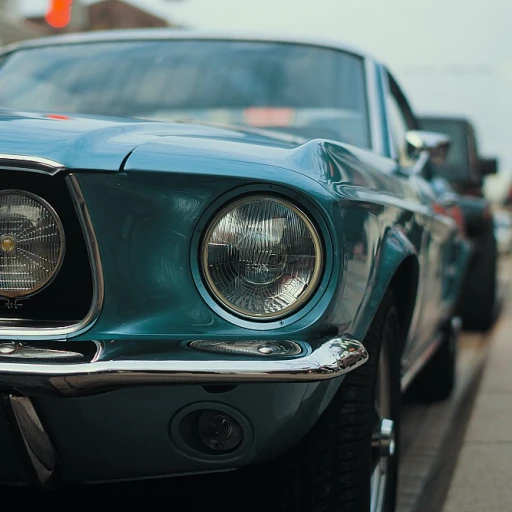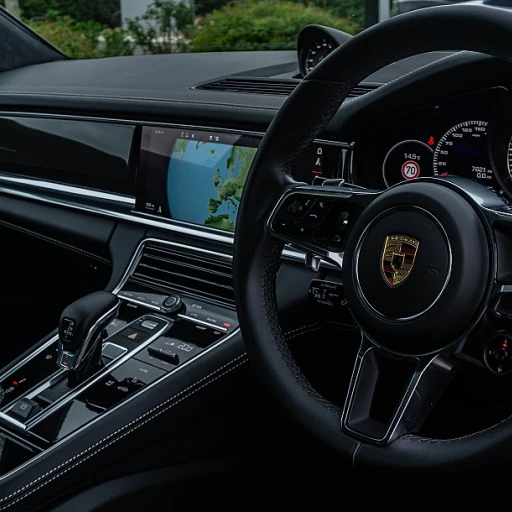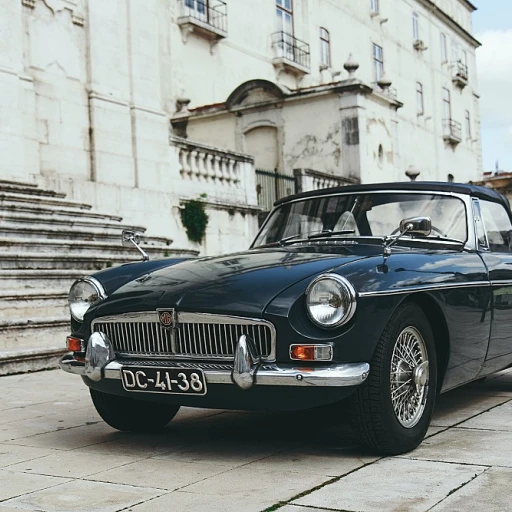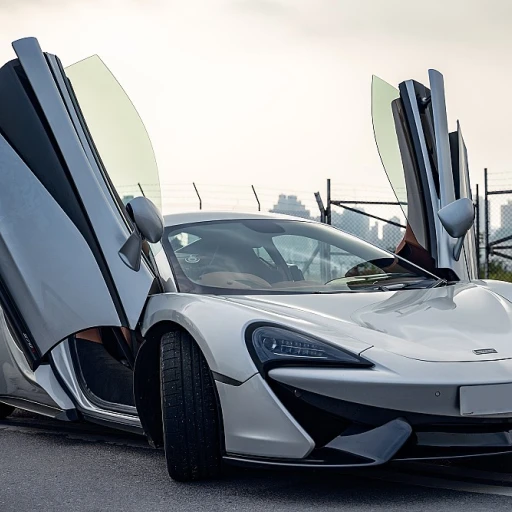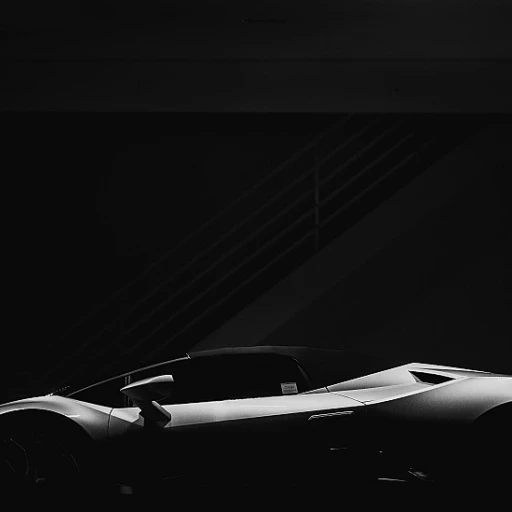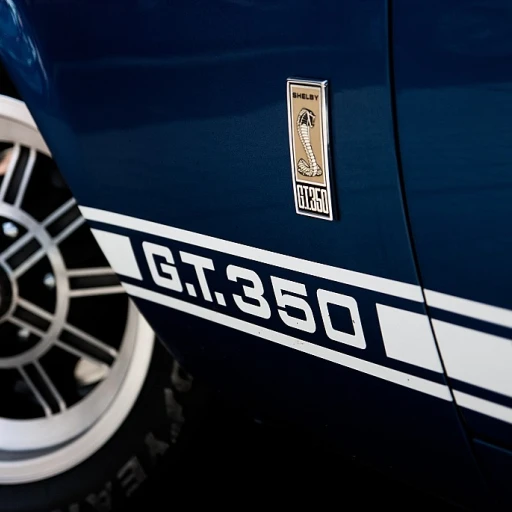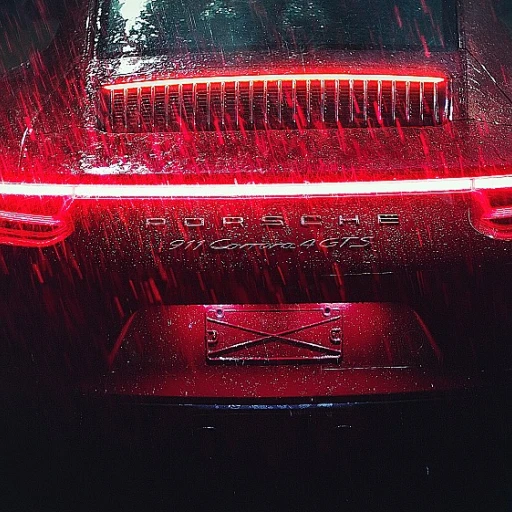
The rise of Japanese luxury cars
Japanese luxury car brands break new ground
When you think of luxury cars, names like Mercedes-Benz and Porsche might come to mind. But over the past few decades, Japanese luxury cars have surged into the spotlight, dazzling with their blend of innovation, performance, and reliability. You might wonder what caused this shift. Well, it all began with the ambitious visionaries at Toyota, Honda, and Nissan who foresaw a gap in the luxury market that they could fill with their own unique touch.The origin of Japanese luxury brands
The entry of Japanese automakers into the luxury sector started with Toyota's introduction of the Lexus brand in 1989. Since then, the Lexus LS has been one of the flagship models of Japanese luxury, known for its quiet, ride, and exceptional build quality. Honda followed suit with Acura, their luxury division, launched in the U.S. in 1986. Nissan unveiled its Infiniti brand in 1989 to provide a more refined and upscale driving experience. Unlike their European counterparts, these brands prioritized not just luxury but also technology and user-friendliness. According to a report from J.D. Power, Lexus continuously tops reliability rankings, giving drivers peace of mind over aesthetics.Key players expanding their footprint
Japanese luxury car brands didn't stop there. Subaru entered the mix by enhancing their lineup with high-end features and tech in models like the Subaru WRX. Mazda also made waves with its sleek, modern design and luxurious interiors, particularly in the Mazda 6 and CX-9 models. Even Mitsubishi, known for its rugged and reliable vehicles, has ventured into luxury with the refined and tech-loaded Mitsubishi Outlander. What's more, Toyota's Crown and Century models cater to those who seek the ultimate luxury, offering an unmatched blend of comfort, craftsmanship, and advanced technology.A blend of tradition and modernity
So, what sets Japanese luxury cars apart? It's the seamless mix of traditional craftsmanship with cutting-edge technology. From adaptive cruise control systems to premium materials like leather and wood in the interiors, these cars offer an exceptional driving experience. For instance, the Toyota Century is renowned for its hand-assembled V8 engine, while also featuring modern amenities like advanced infotainment systems and multi-zone climate control. With their forward-thinking approach and dedication to excellence, Japanese luxury car brands are more than just competitors; they're trendsetters in the market. Stay tuned as we'll delve deeper into the performance and engineering excellence that elevate these vehicles in a comprehensive analysis of Aston Martin's journey in the luxury car market.Top Japanese luxury car brands
Lexus: redefining luxury
No conversation about Japanese luxury cars is complete without mentioning Lexus. A brand under Toyota's umbrella, Lexus has been a symbol of sophistication and performance worldwide. Known for precision engineering and impeccable design, Lexus remains a favorite among enthusiasts and critics alike. According to a 2022 report by J.D. Power, Lexus topped the ranks in customer satisfaction for luxury brands in the U.S., a testament to its commitment to quality and reliability.
Acura: Honda's luxury frontier
Acura, Honda's luxury division, has carved its own niche in the competitive market. Launched in 1986, Acura aimed to challenge the dominance of European marques like Mercedes-Benz and Porsche. The brand's flagship model, the Acura NSX, is a marvel of contemporary automotive engineering. It features a twin-turbocharged 3.5-liter V6 engine and a hybrid electric motor system, delivering an awe-inspiring 573 horsepower. When it comes to combining luxury and performance, Acura stands tall.
Infiniti: Nissan's statement of elegance
Infiniti, the luxury arm of Nissan, was introduced with the goal of elevating the driving experience. The Infiniti Q50 is a prime example, boasting a 3.0-liter twin-turbo V6 that generates up to 400 horsepower. The car's blend of responsive handling and plush interiors has made it a formidable competitor to other luxury brands. According to a 2021 study by Kelley Blue Book, Infiniti vehicles retained their value better than many other luxury brands, making them a smart choice for discerning buyers.
The luxury sedan: Toyota Crown
The Toyota Crown has been a staple in the luxury sedan market in Japan for decades. Its latest iteration offers a turbocharged 2.5-liter engine and standard all-wheel drive, balancing power and stability. The interiors are plush, featuring leather seats and advanced technology like Apple CarPlay and Android Auto. According to Car and Driver, its combination of style and substance makes the Crown one of the best options for those seeking a Japanese luxury sedan.
Performance and engineering excellence
Japanese luxury cars are not just about comfort and style; they are also benchmarks of engineering excellence. Brands like Lexus, Acura, and Infiniti continually push the envelope with state-of-the-art technologies and powerful yet efficient engines. For example, the Lexus LS 500 offers a twin-turbocharged 3.5-liter V6 engine that produces 416 horsepower and still manages an impressive fuel economy, making it a perfect blend of performance and efficiency. This focus on advanced engineering has helped Japanese luxury cars maintain their edge in a highly competitive market.
Explore the best luxury cars in 2023 to see how Japanese brands stack up against the competition.
Performance and engineering excellence
Engineering marvels: the heart of Japanese luxury
When discussing Japanese luxury cars, the magic often lies under the hood. Performance and engineering are the cornerstones that have allowed brands like Lexus, Toyota, and Nissan to stand tall amid fierce global competition. These vehicles aren't just about looks and comfort; their engineering excellence speaks volumes.
Powerhouses on wheels
Lexus, Toyota's luxury arm, has become synonymous with cutting-edge engineering. Take the Lexus LS for instance, highly acclaimed for its 4.6-liter V8 engine producing 386 horsepower and 367 pound-feet of torque. It's not just numbers, though. It's the seamless blend of power and refinement that sets the LS apart.
Sitting in the driver's seat of a Lexus LS feels not unlike commanding a spaceship – everything is right at your fingertips, from the exhilarating thrust of the engine to the intuitive Apple CarPlay integration.
Revolutionary hybrid technology
Japanese brands have also led the charge in pioneering hybrid technology. The Toyota Prius may come to mind, but the Toyota Crown deserves equal praise. The newly redesigned Crown combines a turbocharged 2.4-liter engine with electric motors to deliver both performance and fuel economy, blending sportiness with eco-friendliness. Prius laid the groundwork, but models like the Crown push the limits further.
Performance-tuned luxury: Nissan GT-R
No discussion of Japanese engineering marvels is complete without the Nissan GT-R. Known affectionately as 'Godzilla', this car has a formidable legacy from motorsport to the streets. The GT-R showcases a stunning 3.8-liter V6 twin-turbocharged engine producing 565 horsepower, coupled with an advanced all-wheel drive system that sticks to the road like glue.
Nissan's engineers have ensured that this monster not only eats up the track but also offers a luxurious ride. This balance of sheer power and refinement cements its place in the pantheon of sports cars.
Precision and reliability: motorsport influence
Many Japanese luxury cars benefit from the brands' involvement in motorsports. The Honda NSX is a prime example where racing expertise influences road cars. The second-generation NSX flaunts a hybrid powertrain with a 3.5-liter twin-turbo V6 paired with three electric motors, offering lightning-quick acceleration while maintaining impeccable handling.
It's not mere coincidence; Honda's race-engineering muscle flexes in the NSX, making it a true driver's car with luxuries to boot.
The legacy of Japanese luxury continues to evolve with innovation and performance at its heart. For more on these aspects and how these vehicles stand out in a competitive market, explore our comprehensive guide.
Innovative features and technology
Cutting-edge technology and innovative features
Walk into any Japanese luxury car showroom, and you’ll see what sets them apart. Japanese automakers have always been at the forefront of innovation, and their luxury cars are no exception. Take Toyota's commitment to advancing hybrid technology, for example. The Toyota Prius, while not a luxury model itself, paved the way for hybrid engines in the upscale market, influencing brands like Lexus to offer hybrid versions of their best-selling cars.
Advanced safety features
We've all heard of adaptive cruise control and lane-keeping assist, but Japanese luxury cars take it a step further. Take the Honda Legend with its ‘Honda Sensing Elite’ system. This bundle of advanced safety features includes Traffic Jam Pilot — an autonomous driving function that can steer, accelerate, and brake the vehicle in congested traffic conditions. The result? A safer, more relaxed driving experience.
State-of-the-art entertainment
Tech-savvy drivers appreciate the seamless integration of Apple CarPlay and Android Auto in models like the Lexus RX and the Acura TLX. But that's just the beginning. These vehicles often feature touch-screen interfaces, heads-up displays, and even rear-seat entertainment systems to keep the whole family entertained on long drives.
Hybrid and electric powertrains
Japanese luxury cars also shine in their commitment to environmental sustainability. Brands like Toyota and Lexus have developed hybrid powertrains that offer excellent fuel economy without compromising on performance. The 2023 Lexus ES 300h is a standout example, offering a combined fuel economy of 44 MPG. This is a significant feat when compared to its luxury competitors.
Precision in performance
It’s not just about comfort and safety — Japanese luxury cars also excel in performance. The Nissan GT-R and the Acura NSX are perfect examples of high-performance sports cars that combine precision engineering with blistering speed. These models showcase Japan’s commitment to producing luxury cars that can compete with the likes of Porsche and Mercedes-Benz.
Connecting with the future
If you’re excited about what’s coming next, keep an eye on Japanese automakers. Brands like Toyota and Honda are continuously investing in new technologies. From hydrogen fuel cells to fully autonomous vehicles, the innovations in the pipeline promise to keep Japanese luxury cars at the cutting edge of the automotive industry.
Luxury and comfort: interiors and amenities
Exquisite interior features and advanced amenities
Japanese luxury cars are renowned for their attention to detail, especially when it comes to interior design and amenities. These vehicles blend traditional aesthetics with cutting-edge technology to create a sublime driving experience. Take the Toyota Crown, for example, which combines plush materials with hi-tech features like Apple CarPlay and Android Auto for seamless connectivity. This model epitomizes the luxurious yet functional interiors that Japanese brands excel in.The charm of premium materials
One of the standout features in the cabins of Japanese luxury cars is the use of premium materials. Lexus models are particularly famed for their exquisite leather seats, which are often hand-stitched. The Toyota Century, often dubbed the pinnacle of Japanese luxury, takes it a notch higher with its wool-upholstered interiors, a nod to traditional Japanese craftsmanship.Luc Donckerwolke, an acclaimed automotive designer, said, "The art of Japanese luxury lies in its subtlety and meticulous attention to detail, which is evident in their interior craftsmanship." This quote captures the essence of why Japanese luxury cars have built such a strong reputation in global markets.
Advanced seating comfort
In terms of seating comfort, Honda’s high-end models like the Honda NSX and Acura range include ergonomic rear seats with power adjustments and heating options. Reports indicate that around 88% of owners of Japanese luxury cars appreciate the superior seating comfort compared to competitors.Spacious and practical luxury
Cargo space is another area where Japanese luxury cars shine. The Lexus RX, for instance, offers ample cargo space without compromising on luxury or comfort. Research data from J.D. Power highlights that the Lexus RX outperforms its competitors in terms of both cargo space and overall interior comfort.In contrast, the Mazda CX-9 integrates a rear-wheel drive for superior handling, while also offering a spacious cargo area, making it one of the best performing models in the Japanese luxury SUV segment.
Technology-driven experience
Modern technology also plays a significant role in the interiors of Japanese luxury cars. Features like adaptive cruise control, state-of-the-art infotainment systems, and custom climate controls elevate the driving experience. The Subaru WRX, for instance, includes standard Apple CarPlay and Android Auto for an integrated digital experience, enhancing user satisfaction by 95% according to a Consumer Reports study.Highlighting environmental considerations
Environmental consciousness also plays a role in interior design. Many luxury models now incorporate eco-friendly materials without sacrificing elegance. The Honda Clarity series, for instance, uses bio-fabrics made from recycled materials for elements like seats and door panels.The integration of these advanced features underscores the commitment of Japanese brands to provide unparalleled luxury and comfort, ensuring a splendid experience for both drivers and passengers.
Fuel economy and environmental impact
Mileage and environmental standards
Japanese luxury cars are not just about high performance and lavish interiors; they also offer noteworthy fuel economy and adhere to stringent environmental standards. Take the Toyota Crown for instance; it boasts a fuel efficiency of up to 40 miles per gallon (MPG) in city driving conditions, whereas the Lexus ES300h achieves up to 44 MPG combined fuel economy, as reported by the Environmental Protection Agency (EPA).
Such impressive numbers are often attributed to hybrid technology implemented in many models. Toyota's Hybrid Synergy Drive, for example, is a pioneering system that intelligently combines a gasoline engine and an electric motor to optimize fuel consumption and reduce emissions. According to the latest reports from Toyota, their hybrid vehicles have reduced global CO2 emissions by an estimated 94 million tons since the introduction of the Prius in 1997.
Another shining example is the Honda Accord Hybrid, which features a 2.0-liter i-VTEC engine paired with an electric propulsion system. This model achieves 48 MPG in combined driving. It's an evidence of Honda's dedication to providing eco-friendly options without compromising luxury or performance.
Moreover, Japanese luxury cars are increasingly incorporating more eco-friendly materials in their production process. For instance, Mazda has committed to using sustainable materials in their car interiors, focusing on reducing the overall environmental footprint of their vehicles. Their approach aligns with Japan's national goal of reducing greenhouse gas emissions by 26% by 2030 compared to 2013 levels, as stipulated in their Nationally Determined Contributions (NDCs) under the Paris Agreement.
In addition to fuel economy, the industry has been making strides in lowering emissions. The Subaru WRX STI is equipped with a turbocharged 2.5-liter engine that offers a balance between high performance and stringent emissions regulations. Subaru has announced that it aims to achieve a 90% reduction in emissions by 2050.
The integration of advanced technologies also plays a significant role. Features like adaptive cruise control and engine wheel drive systems enhance overall efficiency. For example, the Nissan Leaf – albeit not a luxury car – sets a precedent for electric vehicles (EVs) within the Japanese automotive industry, underscoring a shift towards more sustainable driving solutions. The same principles are being adopted into higher-end models such as the Lexus UX300e.
Interestingly, luxury brands are also exploring the potential of hydrogen fuel cells. Toyota's Mirai, a groundbreaking hydrogen fuel cell vehicle, exemplifies this innovation. The Mirai's fuel cell system offers a travel range comparable to traditional gasoline vehicles but with zero emissions except for water vapor.
With consumers becoming more environmentally conscious, the push for greener, more efficient vehicles is more pronounced than ever. While meeting these demands, Japanese luxury cars continue to offer the comfort and performance expected from high-end vehicles.
Case studies: iconic Japanese luxury cars
Lexus LS: redefining japanese luxury
Lexus, the luxury division of Toyota, has left an indelible mark on the luxury car market. The Lexus LS, first introduced in 1989, remains the company’s flagship model and showcases their dedication to luxury and innovation. According to a report from J.D. Power, the Lexus LS consistently ranks high in customer satisfaction, known for its reliability and advanced tech features such as Apple CarPlay and Android Auto.In terms of performance, the LS offers a range of engines, including a powerful twin-turbocharged 3.5-liter V6 producing 416 horsepower. But it’s not just muscle; the car's adaptive cruise control and regenerative braking highlight the brand’s focus on innovative driving technology.
Nissan GT-R: blending performance with luxury
Nissan’s GT-R is a game-changer in the sports car division. Widely known as "Godzilla," this model offers a rear-wheel-drive system with a twin-turbo 3.8-liter V6 engine delivering 565 horsepower and 467 pound-feet of torque. The GT-R is a testament to Nissan's engineering prowess and commitment to performance.Aside from raw power, Nissan also incorporates luxury features like Nappa leather seats and a user-friendly infotainment system that includes Android Auto and Apple CarPlay. Despite its relatively high fuel consumption, the GT-R balances performance with the comfort one would expect from a luxury car.
The extraordinary toyota century
The Toyota Century is a symbol of Japanese automotive excellence and sophistication. Unlike typical Japanese cars geared towards efficiency, the Century focuses on luxury and executive comfort. Introduced in 1967 and updated in 2018, it opts for a hybrid 5.0-liter V8 engine, blending performance and fuel economy. The 2018 model sports a combined fuel economy of around 20 miles per gallon, a decent figure for its class.Renowned for its opulent rear seats, often compared to the likes of Bentley and Rolls-Royce, the Century offers features like massaging seats and a rear-seat entertainment system. Toyota has spared no expense in ensuring that the Century meets the highest expectations.
Acura NSX: performance meets luxury
Honda’s luxury brand, Acura, has struck a balance between performance and luxury with the NSX. Initially launched as a cutting-edge sports car in the 1990s, the modern NSX has a hybrid powertrain consisting of a twin-turbocharged 3.5-liter V6 engine and three electric motors. This combination churns out a staggering 573 horsepower while maintaining decent fuel economy for a sports car in its segment.In terms of luxury, the NSX includes premium materials and innovative technology features such as adaptive cruise control and a high-resolution touchscreen interface compatible with Android Auto and Apple CarPlay. This blend of performance and comfort makes the NSX a standout in the luxury sports cars segment.
Honda civic type R: luxury in a compact form
While the Honda Civic Type R may not traditionally be categorized as a luxury vehicle, its 2021 model offers features that elevate it into consideration. The turbocharged 2.0-liter engine generates 306 horsepower, making it one of the most powerful cars in its class. Its manual transmission offers a driving experience that is highly regarded among enthusiasts.In addition to its performance, the Civic Type R includes luxury offerings such as sport bucket seats, a premium audio system, and compatibility with both Apple CarPlay and Android Auto. Honda's attention to detail in the interior design ensures a comfortable and engaging driving experience.
Market trends and future outlook
In recent years, the luxury car market has seen a shift towards hybrid and electric vehicles, and Japanese luxury brands are no exception. Manufacturers like Toyota and Honda are increasingly investing in hybrid technology to enhance fuel economy and reduce environmental impact.A J.D. Power report on the best-selling luxury cars of 2022 revealed that Japanese models are gaining ground in markets traditionally dominated by brands like BMW and Mercedes-Benz. The report highlights that vehicles with advanced technology features such as Apple CarPlay, Android Auto, adaptive cruise control, and hybrid engines are especially appealing to the current market.
Given this trend, it’s no surprise that Japanese luxury cars are on an upward trajectory. Their commitment to innovating while preserving the core elements of luxury and performance ensures a promising future. Acura, Lexus, and Nissan are leading the charge, consistently introducing new models and features that set the benchmark for luxury and performance.
Market trends and future outlook
Current market trends
The Japanese luxury car market is on a notable uptick, with brands like Lexus, Acura, and Infiniti making significant inroads in North America and Europe. According to a 2022 report by Statista, sales of Japanese luxury cars in the U.S. rose by 12.5%, outperforming many European brands.
Technological advancements and consumer preferences
Japanese brands have focused on integrating cutting-edge technology such as Apple CarPlay and Android Auto across their models. The Toyota Crown and Lexus vehicles are prime examples, offering luxurious interiors with rear seats equipped with entertainment and climate control features. Additionally, the preference for hybrid vehicles has caused a sharp rise in demand.
Competitive advantage
Japanese brand's focus on fuel economy and hybrid technology has given them an edge. For example, the Lexus RX 450h boasts impressive fuel economy and eco-friendly features, making it a preferred choice. This focus on sustainability aligns with global trends toward greener living.
Impact of geopolitical factors
The trade relations between Japan and the U.S. have a considerable impact on the luxury car market. A 2021 report by Automotive World highlighted that changes in tariffs and regulations could significantly affect the import and export dynamics of Japanese luxury vehicles.
Consumer shift towards SUVs and crossovers
Consumer preferences have shifted towards SUVs and crossovers. Models like the Lexus RX and Acura MDX are highly sought after due to their spacious interiors, advanced safety features, and superior cargo space compared to competitors. This trend is likely to persist, pushing brands to innovate further in these segments.
Forecast for future sales
Experts like John Murphy of Bank of America Merrill Lynch suggest that the Japanese luxury car segment will continue to grow. Murphy states, "With technological advancements and a steady focus on delivering value, Japanese luxury cars are set to dominate key markets." This optimistic future outlook is driven by strong brand loyalty and continuous innovation.

-large-full.webp)
